Shortly after nine, the doors close. Discretion, no sound bites for the record - Chatham House Rules. What remains is the impression of a scene that wants to pick up speed: the second Bremen dialogue focuses on a topic that is likely to shape tactics, logistics and procurement in equal measure in the future: "AI and autonomy - the future of maritime security". The format is embedded in the "Maritime Security and Navy 2035+" series organised by the German Maritime Institute (DMI). Around 90 invited experts from the German Armed Forces, industry, research and government departments will be present.
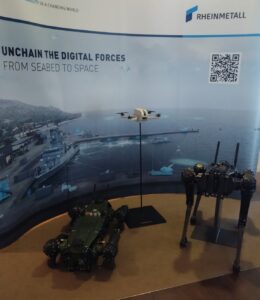
The fact that the dialogue is continuing is also due to a key organiser: Rheinmetall is taking the initiative for 2026 - a clear signal that impulses are turning into work streams. The 2025 edition was hosted by TKMS/Atlas Elektronik.
Six workshops, six perspectives
Six workshop titles are displayed on a screen in the foyer - almost like chapter headings of a common story, six rooms open up different approaches to the same problem. Sensor and effector networks for unmanned systems in room A - how do we couple enlightenment, deception and effect in such a way that the composite achieves more than the sum of its parts, right up to the swarm? Future application scenarios - From mine defence and submarine hunting to object protection and maritime domain awareness: where do USV/UUV and drones bring the greatest added value, and how do they fit into C2/comms and manned/unmanned teaming? Technological disruptions - AI-supported evaluation, digital twins, automation; where could new effectors (including directed energy) shift the rules of the game? Lessons learnt from current conflicts - What is resilient (drones, mines, cyber, EW), what is hype, and what can actually be transferred? AI in operational use - automatic pattern/target recognition, data fusion close to the situation picture, decision assistance; what are the limits (data quality, explainability, robustness)? In room F Guidance rethought: when UxS and AI are on board, leadership changes - role change of officers to system managers, training, human-in/on-the-loop, adaptation of ROE.
Above all, the key question: How are unmanned systems and AI changing tactical and operational command at sea - and what does this mean for the fleet on the way to the Navy 2035+?
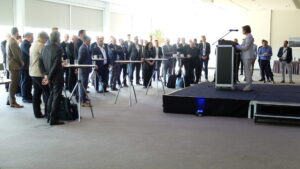
Bremen Industry Quartet
The event is characterised by a balanced industry presence. Rheinmetall Electronics, TKMS/Atlas Elektronik, NVL and Abeking & Rasmussen will be appearing without product folklore - with complementary role models: Guidance/simulation and effects technology, unmanned underwater and surface platforms, MCM approaches and platform-side preparation for drone and mission modules. The tenor: interfaces, interoperability, IT security, retrofitting capability - so that the fleet does not fail later due to "system edges". Rheinmetall is providing organisational support for the format and is taking it to the next level by taking over the initiative in 2026; TKMS/Atlas will be responsible for the host role in 2025.
Situation: Opportunities without euphoria
The security situation provides the focal point. Hybrid threats, vulnerable maritime infrastructure, persistent mine and drone threats - much of this has become more visible. AI-supported sensor technology and networked unmanned systems can increase range, reaction speed and resilience; at the same time, dependencies are growing: Communication, EW resilience, cyber hygiene and data access are becoming hard operational parameters. The dialogue clearly highlights this ambivalence - and thus remains credible.
Leadership in transition
Over the course of the day, a picture of the future bridge emerges: management will become more data-rich, faster - and more selective. AI sorts, prioritises and warns; decisions remain with humans. In practical terms, this means new training modules, more simulator/digital twin components, crew design with system expertise for UxS. Tactical procedures will become more modular, C2 layouts more flexible - with redundancies in the event of disrupted networks. "Kill chains" give way to "sensor-to-decision" networks in which responsibilities are clearly localised.

Why we need these formats
Formats such as the Bremen Dialogue create the necessary Trialogue between industry, the navy and defence managers. They synchronise requirements, technical options and procurability at an early stage, shorten iteration loops and build trust between the players who will later share responsibility. This is no substitute for reforming procurement, approval and IT security processes, but it does pave the way for fleet-related piloting, rapid prototyping and modular introduction stages - with clear test corridors, data rooms and prioritisation. This is precisely why the Bremen Dialogue was designed as a working format.
Marine reference
Drone capability, digital networking and resilience against hybrid attacks are key elements of our navy's vision. Bremen does not start with abstract "digitalisation", but with concrete implementation paths - from the sensor-effector network to command and training issues. The fact that the DMI set the tone, that around 90 experts attended and that the event will continue in 2026 are reliable indicators of the prevailing momentum - and that it will not stop here.
ConclusionThe Bremen Dialogue is a working and trust-based space for the trialogue between industry, the navy and those responsible for armaments. With Rheinmetall as the main organiser and the commitment for 2026, the format has a tailwind. If the lines outlined now lead to trials at sea, incremental introduction and robust standards, this trialogue can make a measurable contribution to accelerating processes - without sacrificing the necessary care.
Photos: hsc
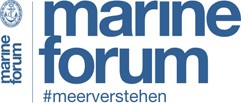
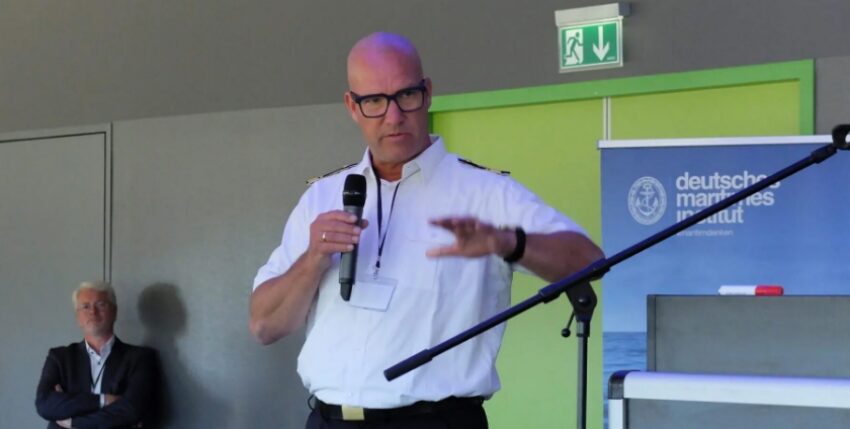







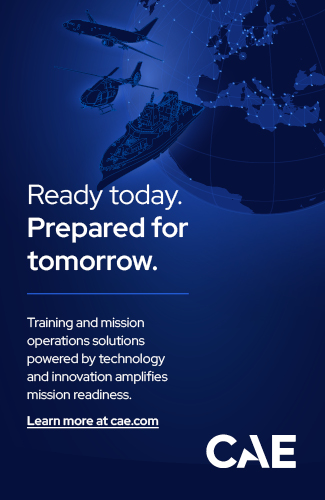
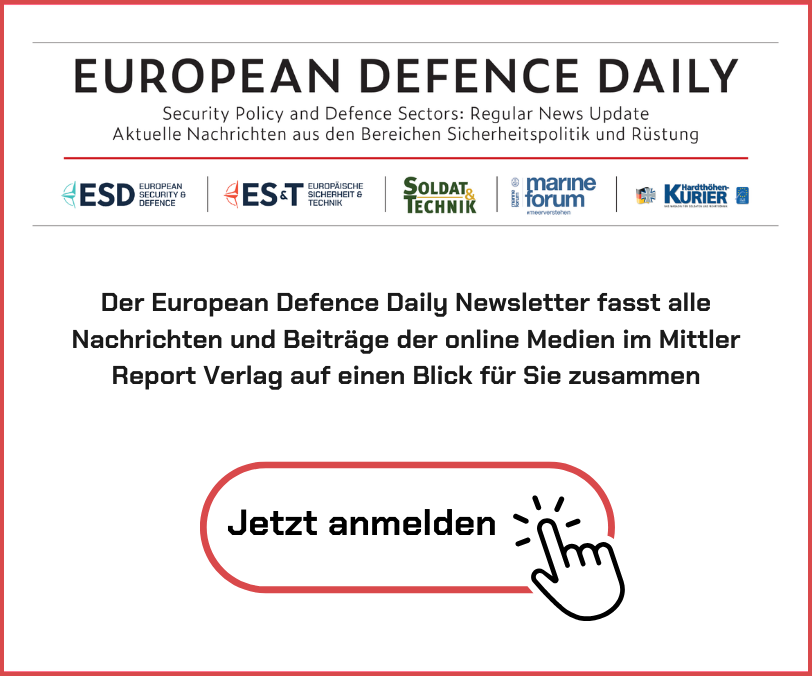
One Response
I am delighted that this article sums up the need of the hour: the "Bremen Dialogue" is much more than a simple meeting place - it is the urgently needed working and trust-based space in which the future of the German Navy takes shape. The establishment of a genuine trialogue between the navy, industry and those responsible for armaments, as described here, is the fundamental key to overcoming the mistakes of the past, which unfortunately became painfully apparent in projects such as the F126, and paving the way for a strategically and technologically better fleet.
The article itself perfectly captures the special atmosphere and productive nature of the format. The deliberate decision in favour of the Chatham House Rules and the avoidance of "product folklore" create an environment in which concrete challenges and solutions can be discussed openly and at eye level. It is not about presenting finished products, but about the joint struggle for the best concepts for the way forward. This work-oriented approach, which synchronises requirements, technical options and procurability as well as interfaces at an early stage, is much more valuable than relying on a rigid, bureaucratic process in this format and builds precisely the trust that is essential for complex large-scale projects.
The consistent focus on the topics of AI and autonomy is particularly noteworthy. The issues addressed in the workshops - from sensor-effector alliances and manned-unmanned teaming to the redefinition of command and control - are precisely the building blocks required for the realisation of forward-looking concepts. This is not about philosophising about abstract digitalisation, but about laying the concrete and necessary foundations for the naval warfare of tomorrow.
This is where I come full circle to my earlier thoughts on a two-tier fleet architecture. A powerful, manned platform such as the future F127 frigate can only develop its full potential when it acts as the command and control centre of a networked system. The unmanned surface and underwater systems (USV/UUV) discussed in Bremen are the precursors and trailblazers for precisely the capability that I have outlined in my conceptual model of the Large Remote Missile Vessel (LRMV).
Nevertheless, the immense challenges of such a project should not be underestimated. Even my mental model of the LRMV shows the overwhelming technological complexity: ensuring maximum cyber security, developing robust autonomy at levels 4 and 5, integrating AI into critical decision-making processes and, last but not least, clarifying fundamental legal and ethical issues. The need for a parliamentary review and authorisation procedure (mandate) for the use of weapons underlines the implications. The path from concept to operational system is long and will require cooperation based on trust, as is also practised in Bremen.
The LRMV concept, as an unmanned or minimally manned but heavily armed "external weapon carrier", is a logical consequence of the developments initiated in Bremen. It embodies the principles of distributed lethality, risk minimisation for its own crews and scalable, modular operational capability. A format such as the Bremen Dialogue is indispensable for defining the necessary interfaces, interoperability and robust standards so that such revolutionary concepts do not fail due to "system edges".
The fact that this dialogue is supported by leading industrial companies such as Rheinmetall, TKMS/Atlas Elektronik, NVL and Abeking & Rasmussen and has been consolidated with the commitment for 2026 is a strong and extremely positive signal. It shows that the momentum has been recognised and the will to join in. This trialogue can be the catalyst that can turn strategic visions such as the combination of F127 and LRMV into test-ready, incrementally deployable and ultimately war-ready reality for the Navy 2035+. This is absolutely the right and important step for the coming period.
With kind regards to Holger Schlüter and in the hope that my messages, such as yesterday's e-mail, will not put undue strain on him.